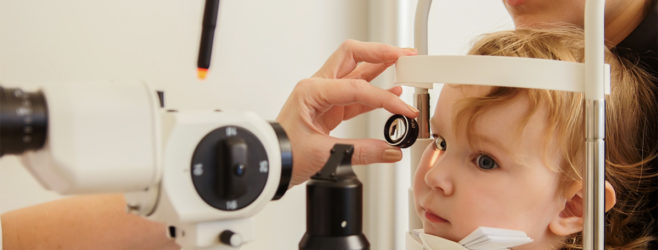Vision problems occur in 75-90% of children with cerebral palsy, and 1 in 10 children with the condition are blind. This is because vision problems and cerebral palsy are both typically caused by damage to the brain.
It is essential to get your child’s vision tested. With proper diagnosis, many cerebral palsy vision problems can be effectively treated, significantly improving a child’s healthy development.
While some critical vision treatments and aids can be expensive, you could be eligible for financial support if your child’s cerebral palsy stems from a birth injury due to medical negligence. Find out if you qualify by getting a free case review now.
What Causes Vision Issues in Children With Cerebral Palsy?
Vision problems are often due to cortical visual impairment (CVI), a result of damage to the brain’s occipital lobe. This area processes and interprets visual information.
The occipital lobe is responsible for the following vision functions:
- Determining depth, size, and distance
- Identifying colors
- Mapping out the visual world
- Moving the eyes
- Recognizing objects and faces
If the occipital lobe gets damaged, these important visual functions can be impaired, leading to light sensitivity, squinting, and blurry vision.
Damage to the occipital lobe can be caused by hypoxic-ischemic encephalopathy (HIE), which restricts blood and oxygen to the brain. Occipital lobe damage can also occur from asphyxia and head pressure or trauma.
All of these injuries are also considered causes of cerebral palsy. Therefore, vision problems and cerebral palsy often occur together. Additionally, children with spastic cerebral palsy have a greater risk for certain types of cerebral palsy-related vision problems.
6 Types of Vision Problems in Children With Cerebral Palsy
There are several common types of vision problems children with cerebral palsy experience.
Some cerebral palsy vision problems include:
- Amblyopia (lazy eye) happens when the brain’s connection to one eye is weaker than the other. Because the brain naturally favors the stronger eye, the weaker eye usually worsens. About 15% of children with CP also had amblyopia, according to a study in the British Journal of Opthalmology.
- Nystagmus occurs when there are involuntary and repetitive movements of the eye.
- Optic atrophy affects the optic nerve, interfering with the impulses from the eye to the brain. Damage to the optic nerve can cause vision problems such as blindness.
- Refractive errors include farsightedness, nearsightedness, astigmatism, and blurry vision.
- Squint (strabismus) is a condition that causes eyes to appear crossed due to weak eye muscles. It is the most common cerebral palsy vision problem, affecting nearly 53% of patients in the same study.
- Visual field defects create a blind spot in one or both eyes. About 11% of children with cerebral palsy experienced visual field defects, according to the study.
These are just some of the common vision problems children with CP may experience. An eye specialist can help identify and treat any type of cerebral palsy vision problem that your child may be experiencing.
Need help with your child’s cerebral palsy? Contact our nurses today to get answers to your questions and connect with useful resources.
Complications Associated With CP Vision Problems
The development of motor skills and the ability to move without significant effort is dependent on vision. Sight problems in cerebral palsy can make it difficult for children to move around, be curious, and explore their surroundings. This, in turn, can have lasting effects on other developmental milestones.
Additionally, cerebral palsy vision problems can interfere with the development of:
- Cognitive function
- Fine and gross motor skills
- Language and communication
- Play skills
- Self-help skills
- Social skills
Early detection of various vision problems can help your child get the treatment they need so they can get back to developing these important skills.
Diagnosis & Treatment for Cerebral Palsy Vision Impairment
If your child is showing signs of visual impairment due to cerebral palsy, it is important to get a diagnosis from an ophthalmologist, a doctor who specializes in eye and vision care.
The doctor will usually look at three areas of possible concern:
- Degree of sharpness in eyesight
- Physical movement of the eyes when aiming at subjects
- Processing of information that the brain receives
Treatment options for cerebral palsy vision problems will be based on the specific issues your child is facing.
Treatment may include:
- Glasses and other visual aids
- Regular optometrical testing
- Vision surgery, in more severe cases
Studies have shown that correcting cerebral palsy vision problems significantly improves a child’s development. Therefore, it is essential to get a comprehensive evaluation to determine which options are best for your child.
Get Help With Cerebral Palsy and Vision Treatment
Cerebral palsy treatment, alongside treatment for co-occurring conditions like vision problems, can be expensive. But these treatments are crucial to improve your child’s quality of life and make managing their disability easier.
If your child’s cerebral palsy was caused by a preventable birth injury, you may be able to get compensation from a birth injury lawsuit. These lawsuits seek to hold medical staff responsible for failing to provide quality care by diagnosing, treating, or preventing the injury.
Find out if you are eligible by starting a free case review now or contacting our nurses at (800) 914-1562.



